Tag: Security
Enhance the security of your server by reading through our easy to follow tutorials. From installing firewalls to auto-renewing SSLs, our expansive library is sure to be your bookmark favorite.
On an Ubuntu server the default firewall management command is iptables. While iptables provides powerful functionality it’s syntax is often seen as complex. For most users a friendlier syntax can make managing your firewall much easier.
Lately there’s been a lot of speculation about Googles up-coming changes to how sites without an SSL are going to be treated. As January draws towards a close we have seen an increase in customers with concerns of how this will affect their site. Both in terms of people being able to see it and how it might affect their search ranking.
How does an SSL work?
 What is an SSL?
What is an SSL?
An SSL (or Secure Socket Layer) is the standard method for creating an encrypted link between a web browser and a web server. This secure link ensures that data passed between the browser and the web server are private.
One of the most important things you can do to ensure the security and stability of your Linux dedicated server is to keep the kernel updated. Some Kernel updates patch security vulnerabilities and other issues. Kernel patches are released as issues are discovered.
What Is KernelCare?
 The concept of ‘Kernel hotpatching’, sometimes called live patching, was introduced to the Linux community around 2008. Soon after groups began developing differing implementations of the concept. KernelCare, one of the more popular implementations, was originally released in March 2014 by Cloud Linux, Inc.
The concept of ‘Kernel hotpatching’, sometimes called live patching, was introduced to the Linux community around 2008. Soon after groups began developing differing implementations of the concept. KernelCare, one of the more popular implementations, was originally released in March 2014 by Cloud Linux, Inc.
How To Set up Hotlink Protection in cPanel
II. How To Create an Email Account in cPanel
III. How To Set Your Default Address in cPanel
IV. How To Set up an Autoresponder in cPanel
V. How To Set up Email Forwarding in cPanel
VI. How To Set up Email Filters in cPanel
VII. How To Enable Spam Protection in cPanel
VIII. How To Add an MX Entry in cPanel
IX. How To Use Webmail from Within cPanel
X. How To Change Your cPanel Password
XI. How To Update Your Contact Information in cPanel
XII. How To Change Your cPanel Theme
XIII. How To Change the Primary Language in cPanel
XIV. How To Add a Record With the DNS Zone Editor in cPanel
XV. How To Back up Your Website in cPanel
XVI. How To Use the Disk Space Usage Tool in cPanel
XVII. How To Create Additional FTP Accounts in cPanel
XVIII. How To Password Protect a Directory in cPanel
XIX. How To Use the IP Blocker in cPanel
XX. How To Set up Hotlink Protection in cPanel
XXI. How To Create a Subdomain in cPanel
XXII. How To Create an Addon Domain in cPanel
XXIII. How To Create a Domain Alias in cPanel
XXIV. How To Set up Domain Redirects in cPanel
XXV. How To Create a MySQL Database in cPanel
XXVI. How To Use the Index Manager in cPanel
XXVII. How To Create Custom Error Pages in cPanel
XXVIII. How To Set up a Cron Job in cPanel
- This tutorial assumes you’ve already logged in to cPanel, and are starting on the home screen.
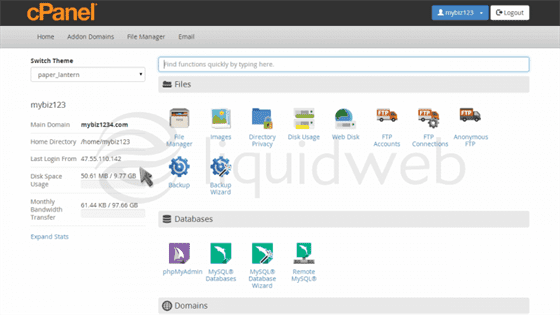
- Now let’s learn how to setup hotlink protection.
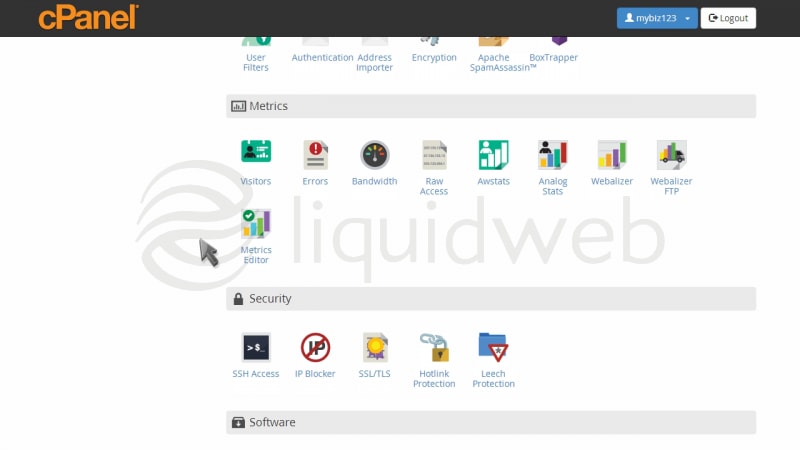
- Click the “Hotlink Protection” icon.
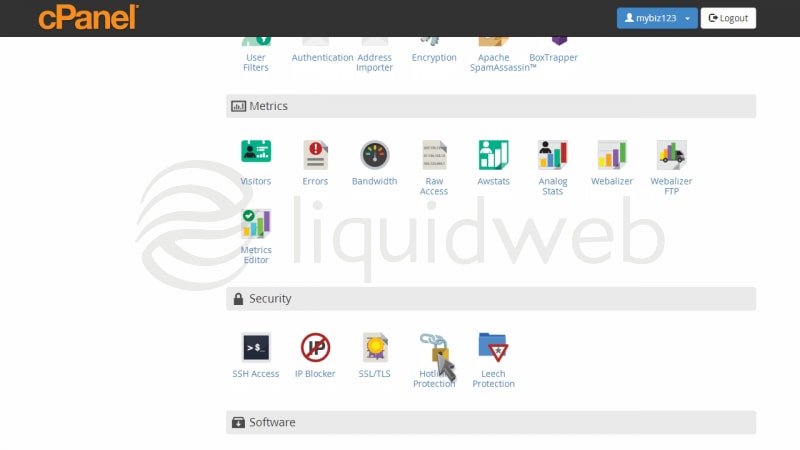
- Hotlink protection prevents other websites from directly linking to certain files (typically images) on your website. You’ll want to prevent this if you have copyrighted images, or to simply save on bandwidth usage. You’ll first want to make sure your own sites are listed here, so you are able to hotlink to your images.
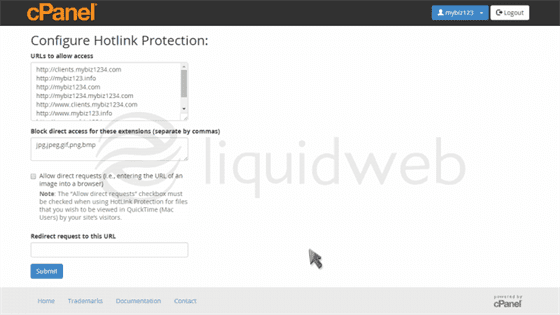
- Enter all the file types you want to protect …
- … and check the “Allow direct requests” box if you want to give the ability to manually enter URLs of a protected file.
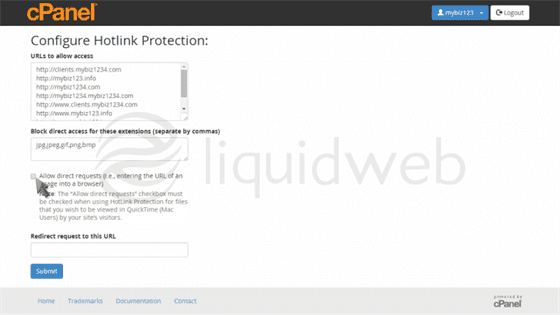
- Enter the URL you want to redirect to, for anyone who tries to hotlink to your files or images.
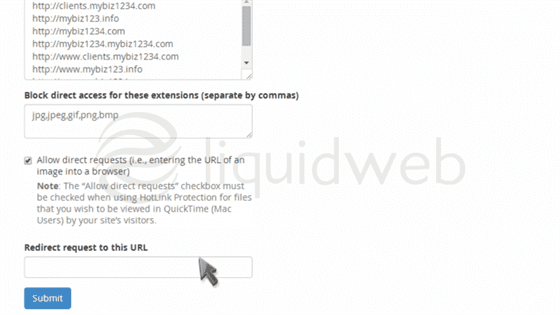
- Then click “Submit”.
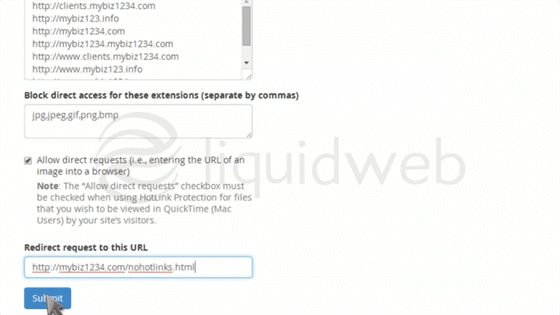
- That’s it! You’ve successfully enabled hotlink protection.
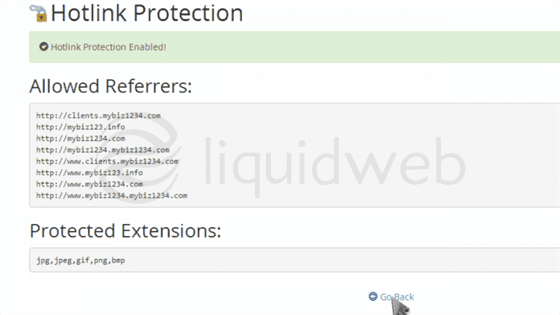
- To disable hotlink protection, click the “Disable” button.
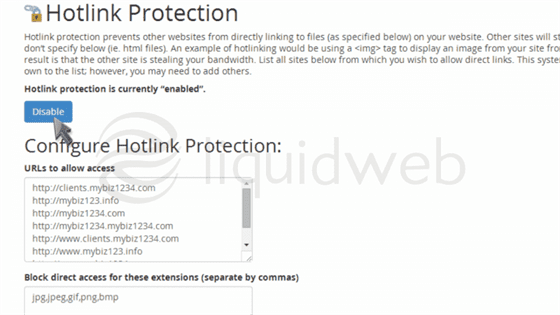
Information on CVE-2015-5154
Overview
Information on CVE-2015-5154 was made public on July 27, 2015. The vulnerability is in QEMU, a generic and open source machine emulator and virtualizer that is utilized by Xen, KVM, and other modern hypervisors / virtualization platforms.
Pre-Flight Check
- These instructions are intended specifically for checking your version of cPanel or WHM via the command line or the WHM dashboard.
- I’ll be working from a Liquid Web Managed CentOS 7 server, and I’ll be logged in as root.
Step #1: Log In to WHM
First, log in to WHM. You’ll arrive at your WHM dashboard:
How to Check the glibc (GNU libc) Version on Fedora 22
Pre-Flight Check
- These instructions are intended specifically for checking the installed version of glibc.
- I’ll be working from a Liquid Web Self Managed Fedora 22 server, and I’ll be logged in as root.
Reminder: Fedora 20 Now End-of-Life (EOL)
Three versions of the Fedora OS are always kept active, at any given time, by The Fedora Project. These would be: 1. the current release, 2. the release before the current release, and 3. a new release that is in development. Last month saw the launch of Fedora 22 and Fedora 23 is in development, thus the time of Fedora 20 is over.
Our Sales and Support teams are available 24 hours by phone or e-mail to assist.

